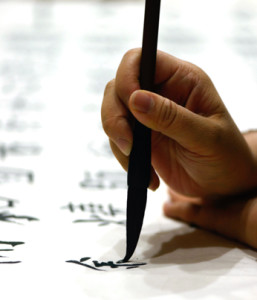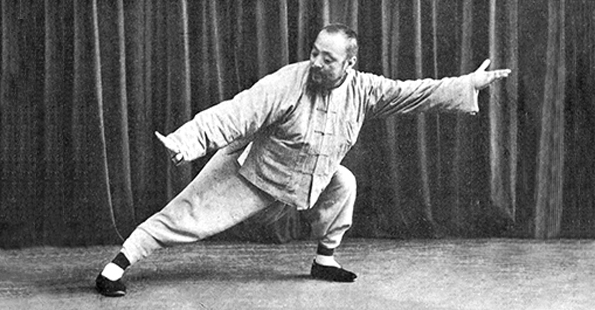Today Taijiquan is practiced both as a self-cultivation and health technique, as well as a martial art. Quite often this results in the discussion about which of these two fields should be emphasized. Interestingly this issue is already commented in classical texts of Taijiquan. Thus, e.g. in the Explanation of the Three Achievements of the Cultural (wen) and the Martial (wu) of Taijiquan:
The cultural (wen) is cultivated internally and the martial (wu) externally. (…)
Those who practice the method of cultivation equally internally and externally,
will gain great achievement. This is the higher path.
Those, who gain the martial of fighting through the cultural of physical education, or those who gain the cultural of physical education through the martial of fighting are on the middle path.
Those who know only physical education without ever fighting or those who wants only to fight without physical education are on the lower path.
(Taijiquan-Lilun Journal 3, p. 9)
 This statement is precise and clear. There are different paths to practice Taijiquan and one has to choose, which one to follow. As this example shows, the classic texts of Taijiquan are an important guide for one own’s training. Ma Yueliang writes on the importance of the classical texts:
This statement is precise and clear. There are different paths to practice Taijiquan and one has to choose, which one to follow. As this example shows, the classic texts of Taijiquan are an important guide for one own’s training. Ma Yueliang writes on the importance of the classical texts:
“Classic documents written by the ancient masters of Taijiquan are based on their experiences and those of their predecessors. The treaties are terse, concise and contain important meaning in every word, and beginners should study them thoroughly and always keep them in mind. Continual practicing will help them to apprehend the true meanings. The classic stresses the importance of the idea that ‘if you don’t seek to go in this direction, it will be a shear waste of effort, and that would be such a pity!’” (Ma, Zee, p. 26)
Among the classical texts of Taijiquan, also briefly called the Classics, are the Five Core Classics which were published 1912 by Guan Baiyi:
– The Taijiquan Classic
– The Taijiquan Treatise
– The Mental Elucidation of the 13 Basic Movements
– The Song of the 13 Basic Movements
– The Song of Striking Hands
The authorship of the Five Core Classics is still controversial. Following the spreading of Taijiquan, more and more Classics and commentaries to them of various Taijiquan schools were published. For a deeper understanding of the Classics it should be considered that although Taijiquan is called an Daoist exercise the Classics itself are based on different Chinese schools of thought. This is exemplified in the following.
The cultural (wen)
If the cultural (wen) is a substantial claim in Taijiquan, it must be assumed that the associated intellectual background is supported by Chinese philosophy. Even the name Taijiquan itself refers to a philosophical concept, the concept of taiji. It is mentioned for the first time in the Great Appendix of the Book of Changes (Yijing), where it is stated:
“In the change is taiji, which generates the two forms [yin and yang].”
(Boedicker, p. 6)
Further more, the Book of Changes appears in many aspects as a significant influence on Taijiquan.
In addition to such independent philosophical texts the great philosophical schools clearly marked the written tradition of Taijiquan. The most important philosophical schools in China are the sanjiao, the three teachings: Daoism, Confucianism and Buddhism. The Daoist influence should be the strongest in the Classics, but unfortunately it is not that easy to show it. Examining e.g. the book Laozi, one will have difficulty to find direct citations between the Laozi and the Classics. Technical key terms, such as dao, de and wuwei are virtually impossible to find. A reference to yin and yang is not enough, since this pair is of great importance in many Chinese schools of thought. Yet surely no one would deny Daoist influence in Taijiquan. It is therefore rather a conceptual orientation – e.g. the preference of the soft. As it says in the Laozi Chapter 78:
The weak overcomes the strong.
The soft overcomes the hard.
This is known by everyone,
but none practices it.
(Boedicker, p. 23)
A different formulation, but the same concept can be found in the Taijiquan Classic:
The other is hard,
I am soft,
this is called going along with (zou).
(Taijiquan-Lilun Journal 2, p. 8)
Further on one can find important clues how to train body and mind. In the Daoist text Inner Training it is stated:
When the body is not aligned,
the inner power (de) cannot develop.
When one is not still inside,
the heart-mind (xin) cannot be well ordered.
Align the body and pay attention to the inner power (de).
Thus one will gradually attain it.
(Boedicker, p. 52)

Leave a Reply